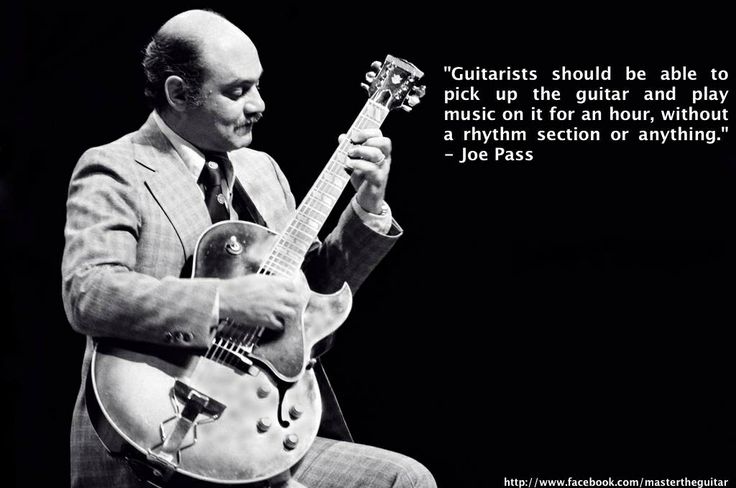
4 Great Chord Melody Jazz Guitarists Part 2: Ted Greene
4 Great Chord Melody Jazz Guitarists Part 2: Ted Greene
Have you ever heard of the Chord Chemist?
In part 2 of this special series entitled 4 Great Chord Melody Jazz Guitarists, you’re going to learn about a jazz guitar chord melody player who made a lasting impact on the jazz guitar scene.
Ted Greene is who I’m talking about, who many believe advanced solo jazz guitar to its highest point of development.
Ted was obsessed with chord voicings, and actually wrote a hefty instructional book entitled Chord Chemistry, which is the most comprehensive manual of guitar voicings ever published.
He was relatively unknown to the general public outside of jazz guitar circles, but Ted Greene’s contribution to the understanding of the guitar is profound.
His one and only album, Solo Guitar, recorded in 1977, is considered by many to be one of the most important solo jazz guitar albums ever to be recorded – it’s the duty of any aspiring chord melody player to check this one out.
Ted was an unbelievable musician, as you’ll hear in the examples below.
Ted Greene’s Life & Career
Ted was born in Los Angeles in 1946 but grew up in White Plains, New York. He began his study of guitar at age 11 and was quickly hooked.
Not exclusively being a jazz player, Ted, in fact, played and mastered many styles of music.
As his career matured, he tended to either play solo guitar gigs or accompany vocalists, as he found bands too limiting.
But most of Ted’s focus was that of an educator, writing a comprehensive series of instructional books on guitar harmony, chord melody and single note soloing.
Most of Ted’s day-to-day life was devoted to teaching his many students – there was always a long list of guitarists eagerly waiting for an opening in his jam-packed schedule.
Ted Greene’s Chord Melody Style
I want you to experience Ted Greene’s playing directly, rather than just me talking about it – so here it is!
The following performance of Send In The Clowns is from Ted Greene’s album, Solo Guitar.
This is my favorite track from this album. To be honest, whenever I listen to it I get tears in my eyes. Ted’s music is powerful and very moving.
Solo Guitar Transcription
Rather than just go through a few licks with you in this article, I have something even better.
How cool is this – I found complete transcriptions of Ted Greene’s album, Solo Guitar, free to download online at The Ted Greene Archive (tedgreene.com).
Click here to go to tedgreene.com to access the PDF transcriptions now!
When studying the chord melodies of Ted Greene, it’s best to learn a complete transcription of one of his recordings like this one – it will give you a good overall sense of his techniques and ideas when it came to solo guitar chord melody.
Ted Greene and…Bruce Lee?
Ted Greene is one of those rare musicians that has completely transcended style, and in a utterly non-contrived way.
Listen to the video of Send In The Clowns above and ask yourself: is it jazz? Is it classical? Is it film music? Is it pop or rock?
I think it’s, in fact, none of these – Ted’s style is something entirely new.
Ted’s playing brings to mind the thoughts of Bruce Lee, a philosopher that really inspires me.
(You can probably tell that from the design of this website… :-)
Bruce Lee was critical of martial artists rigidly applying themselves to just one style, as it essentially boxed in a practitioner and put limits on their understanding and ability:
“Absorb what is useful, discard what is not, add what is uniquely your own.”
“Don’t get set into one form, adapt it and build your own, and let it grow…”
~ Bruce Lee
In the context of jazz guitar, I think Ted Greene managed to achieve what Bruce Lee was talking about here.
Ted transcended the limitation of style, and in doing so created his own personal approach.
To use Lee’s words, he added something that was uniquely his own.
A Master of Harmony
I think one reason for Ted Greene’s incredible skill was his supreme knowledge of Western harmony.
Ted was an avid reader of nearly any book of music theory, and was skilled in distilling complex concepts into easy to understand principles for his students – concepts that could, in fact, be applied to any style of Western music – not just jazz.
If you want no better example of his ability to combine and transcend style, check out this video of Ted improvising spontaneously over Autumn Leaves at one of his workshops at the request of a student – combining classical baroque music and jazz!
Intellectual appraisal aside, the thing I really love most about Ted Greene is that his playing is painfully beautiful – it’s like a window into his soul.
After all, his encyclopaedic knowledge of chord voicings wasn’t a means to an end, it was just the foundation upon which he created a unique, personal and wonderfully expressive sound.
There has been no other guitarist quite like Ted Greene and I don’t think there will ever be another like him in the future.
Further Ted Greene Resources
As I mentioned above, Ted only recorded a single album – Solo Guitar (1977) – but this is required listening for anyone interested in chord melody, and particular solo jazz guitar.
It would be worth checking out Ted’s jazz guitar instructional books. They are a complete resource in itself for any jazz student:
- Chord Chemistry
- Jazz Guitar Single Note Soloing, Vol. 1
- Jazz Guitar Single Note Soloing, Vol. 2
- Modern Chord Progressions: Jazz & Classical Voicings for Guitar
If you’re looking for a great read, check out the book by Ted’s wife Barbara Franklin, entitled My Life With The Chord Chemist: A Memoir of Ted Greene, Apotheosis of Solo Guitar, which recounts Ted’s early life and development as a musician, as well as an insightful narrative of the 13 years prior to his death.
Something I found when I was doing the research for this article was this page on a tribute website, Memories of Ted, with real life stories about Ted Greene by his many guitar students. Reading these stories paints a picture of not only of an extraordinary musician but, most importantly, of Ted’s kind and generous heart.
Finally, check out the resources at tedgreene.com, which has a vast archive of lessons and recordings by Ted.
I hope you enjoyed this exploration into the world of Ted Greene, one of my all-time favorite chord melody guitarists.
Let me know what you think about this article by leaving a comment below!
My New eBook, The Easy Guide To Chord Melody Guitar – Out Now!
I’m pleased to announce that Matt Warnock of Jazz Guitar Online and myself have spent this year co-writing a comprehensive guide on arranging chord melodies and how to master the art of chord soloing, entitled The Easy Guide To Chord Melody Guitar.
This brand new eBook is a complete A-Z guide on creating your own great sounding chord melody arrangements for trio and solo guitar situations, and you’ll also learn how to chord solo (i.e., improvise with chords) like a pro.
To find out more about the book and to get your copy, click here>>
That wraps up the second installment of this four-part series on the great jazz guitar chord melody players.
Next week, you’re going to learn about Lenny Breau, one of my own key influences when it comes to chord melody playing.
I’ll see you then!
Greg O’Rourke, BMus (Hons), ANU









